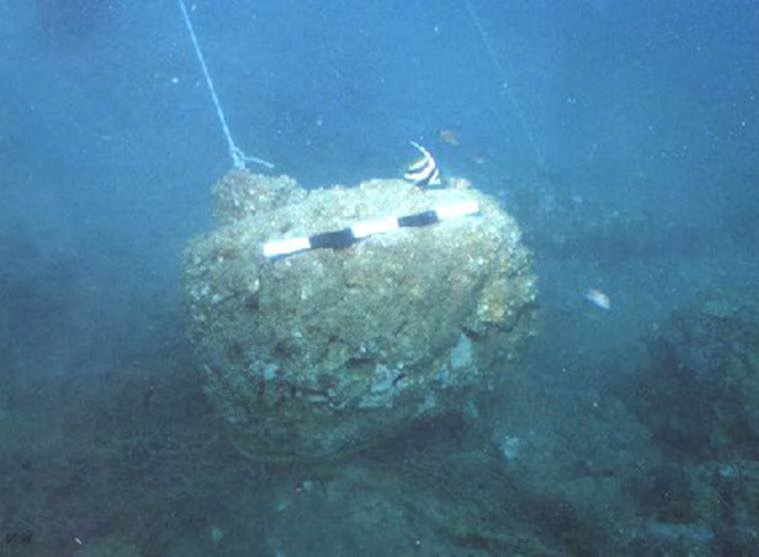Poompuhar, also called Kaveripattinam, was once a thriving port city situated at the confluence of the Kaveri River and the Bay of Bengal in Tamil Nadu, India. Known for its cultural vibrancy, bustling trade, and advanced urban planning, the city played a crucial role in India’s maritime history. Today, much of Poompuhar lies submerged underwater, but recent archaeological discoveries have shed light on its significance and eventual downfall.
A Historical Overview of Poompuhar

During the Sangam period (circa 3rd century BCE to 3rd century CE), Poompuhar served as a major trade hub connecting South India to international markets, including Rome and Southeast Asia. Tamil literary works like Silappathikaram and Manimekalai offer detailed descriptions of the city’s layout, economic activities, and vibrant culture.
The city was divided into two main districts:
- Maruvurpakkam, located near the coast, was home to merchants and fisherfolk.
- Pattinappakkam, situated inland, housed the royal family, aristocrats, and wealthy traders.
Poompuhar’s bustling docks and thriving marketplaces underscored its strategic importance in the ancient maritime trade network.
Evidence of a Submerged City

Marine archaeological studies by the National Institute of Oceanography (NIO) have confirmed the existence of Poompuhar beneath the waves. Underwater excavations have uncovered:
- Stone Wharves: These robust structures hint at the city’s role as a maritime hub, designed for docking ships and unloading cargo.
- Brick Foundations: Remains of brick structures suggest organized urban planning and architectural advancement.
- Artifacts: Pottery, tools, and Roman coins recovered from the site point to a well-established trade network.
One of the most striking findings is the submerged street patterns resembling the city’s layout described in Sangam literature. These discoveries validate the literary accounts and provide tangible evidence of Poompuhar’s prominence.
The Catastrophic Submergence

Poompuhar’s decline and eventual submergence are attributed to natural disasters. Geological studies indicate that the city might have faced a devastating tsunami or a gradual rise in sea levels. Researchers estimate that Poompuhar was submerged around 300 CE, an event that is also mentioned in Tamil texts like Manimekalai.
These texts describe a flood of catastrophic proportions that engulfed the city, forcing its residents to flee. This alignment of geological evidence and literary references paints a compelling picture of Poompuhar’s tragic end.
A New Timeline: Is Poompuhar Older than We Thought?
Recent advancements in technology have provided new insights into Poompuhar’s age. Researchers from Bharathidasan University used remote sensing and sediment analysis to propose that the city could date back over 15,000 years—far older than the previously believed timeline of 2,500 years.
This groundbreaking discovery suggests that Poompuhar may have been one of the earliest urban centers in human history, predating even the Harappan civilization. Such findings have profound implications for understanding the origins of urbanization in South Asia.
Preservation and Digital Reconstruction
Recognizing Poompuhar’s historical and cultural significance, efforts are underway to preserve its legacy. Key initiatives include:
- Digital Reconstruction: Archaeologists and historians are creating virtual models of Poompuhar based on literary accounts and underwater findings. These models aim to recreate the city’s layout, including its bustling markets, grand temples, and intricate dockyards.
- Marine Conservation: Protective measures are being taken to safeguard the submerged archaeological site, ensuring the artifacts remain preserved for future study.
These efforts not only protect Poompuhar’s history but also allow researchers and the public to connect with its rich heritage.
Conclusion
The ancient port city of Poompuhar serves as a powerful reminder of India’s maritime legacy and the ingenuity of its early civilizations. From literary descriptions to underwater discoveries, the evidence paints a vivid picture of a city that thrived on trade and culture.
While its tragic submergence marks the end of its physical existence, modern archaeological efforts ensure that Poompuhar’s story continues to inspire. By uncovering its secrets, we not only learn about the past but also appreciate the resilience and innovation of ancient Indian society.



Your article helped me a lot, is there any more related content? Thanks!
I don’t think the title of your article matches the content lol. Just kidding, mainly because I had some doubts after reading the article.
Your point of view caught my eye and was very interesting. Thanks. I have a question for you.
Thanks for sharing. I read many of your blog posts, cool, your blog is very good.
Thanks for sharing. I read many of your blog posts, cool, your blog is very good.
Your point of view caught my eye and was very interesting. Thanks. I have a question for you.
I don’t think the title of your article matches the content lol. Just kidding, mainly because I had some doubts after reading the article. https://accounts.binance.com/fr-AF/register-person?ref=JHQQKNKN
Your point of view caught my eye and was very interesting. Thanks. I have a question for you.
I don’t think the title of your article matches the content lol. Just kidding, mainly because I had some doubts after reading the article.
Very interesting subject, appreciate it for posting.
Your article helped me a lot, is there any more related content? Thanks!